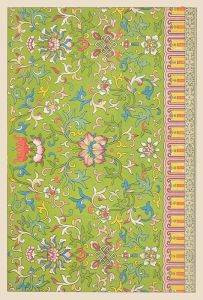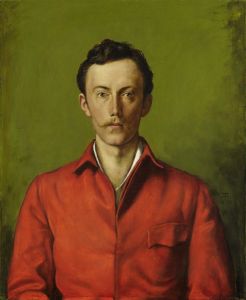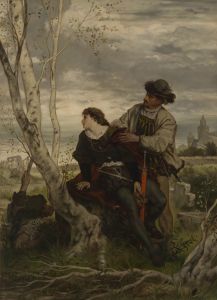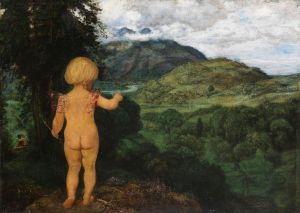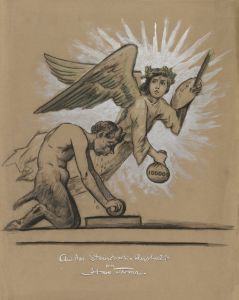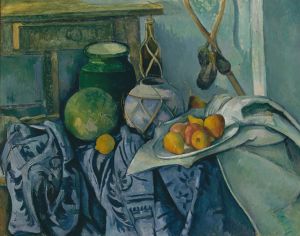
Satyrkopf
A hand-painted replica of Hans Thoma’s masterpiece Satyrkopf, meticulously crafted by professional artists to capture the true essence of the original. Each piece is created with museum-quality canvas and rare mineral pigments, carefully painted by experienced artists with delicate brushstrokes and rich, layered colors to perfectly recreate the texture of the original artwork. Unlike machine-printed reproductions, this hand-painted version brings the painting to life, infused with the artist’s emotions and skill in every stroke. Whether for personal collection or home decoration, it instantly elevates the artistic atmosphere of any space.
Hans Thoma (1839–1924) was a German painter and printmaker associated with the late Romantic and early Symbolist movements. One of his notable works is Satyrkopf (translated as "Head of a Satyr"), which exemplifies his interest in mythological and allegorical themes. The painting depicts the head of a satyr, a creature from Greek mythology known for its association with nature, music, and revelry. Satyrs are often portrayed as half-human, half-goat figures, embodying a connection to the untamed and primal aspects of the natural world.
In Satyrkopf, Thoma focuses on the satyr's face, presenting it in a way that emphasizes both its human and animalistic features. The work reflects Thoma's skill in blending realism with imaginative elements, a hallmark of his artistic style. The satyr's expression is enigmatic, inviting viewers to interpret its mood and character. The painting demonstrates Thoma's mastery of texture and detail, particularly in the rendering of the satyr's hair and skin, which convey a lifelike quality while maintaining an otherworldly aura.
Hans Thoma was deeply influenced by the landscapes and folklore of his native Black Forest region in Germany, and these influences often permeated his work. While Satyrkopf is not as widely recognized as some of his larger compositions, it remains an example of his ability to merge mythological subject matter with a personal and localized artistic vision.
The exact date of creation for Satyrkopf is not well-documented, and little is known about its original context or commission. However, it fits within Thoma's broader oeuvre, which frequently explored themes of nature, mythology, and the human connection to the spiritual and fantastical realms. Today, Hans Thoma is celebrated as a significant figure in German art, and his works are housed in various museums and collections, including the Hans Thoma Museum in Bernau, Germany, which is dedicated to his legacy.
Further details about Satyrkopf, such as its current location or provenance, are not readily available in existing historical records.







